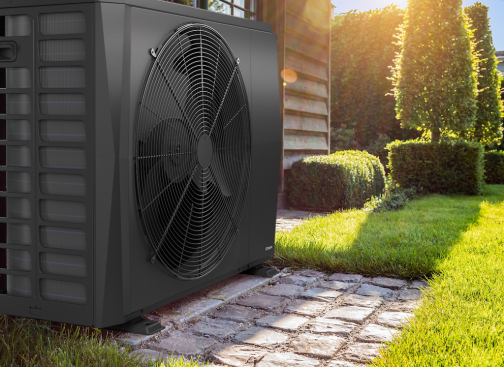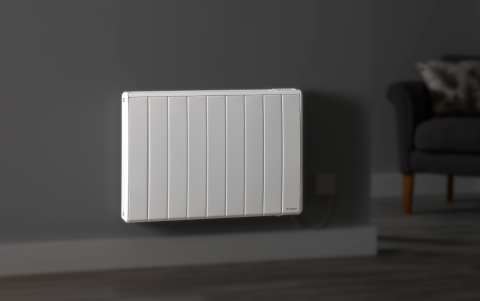What is a split system air source heat pump?

The outdoor unit houses a fan unit and an evaporator. Liquid refrigerant enters the evaporator and, as the evaporator extracts energy from the outside air being blown over the coil by the fan, it turns into a gas. When the gaseous refrigerant leaves the evaporator, it passes through a compressor and is pressurised before being sent through a pipe to the inside section of the split system air source heat pump.
The pressurised refrigerant gas then enters the indoor unit. This part of the split system air source heat pump contains the condenser where the refrigerant gas is turned into liquid and energy is released. This energy is used to heat the water for the dwelling and the pressure of the liquid refrigerant is then reduced in the expansion valve and passes through a pipe back to the outside section for the process of capturing thermal energy from the air to start all over again.
There are several refrigerants available for use in heat pumps, including fluorinated hydrocarbons such as HFCs and PFCs or natural refrigerants, such as propane, and they can differ in their toxicity and effect on the environment. Always seek advice from the heat pump manufacturers on any health and safety issues with the refrigerant and check its global warming potential (GWP) for its impact on the environment.
What are the key features of a split system air source heat pump to consider during project specification?
The internal and external size requirements of having two split units, flexible placement options on the external fan unit, reduced noise levels, installation requirements and kW output are the key considerations of a split system air source heat pump to consider during project specification.
As the physical size of the air source heat pump is split into two, the footprint of the outside fan unit is reduced. This can be advantageous on projects where external space is an issue.
Because the fan unit is linked by refrigerant pipes to the indoor unit, the two units do not have to be positioned near each other. This allows the fan unit to be placed quite a distance away from each other and this, along with its reduced size, makes it ideal for projects where the placement of the unit close to the dwelling is undesirable for practical or aesthetic reasons.
The noise generated by the fan unit is generally reduced when compared to heat pumps that have all the components in one unit. If the effect of noise levels on occupants is of particular concern on a project, the flexibility of moving the fan unit further away allows its acoustic effect on the dwelling to be controlled.
As a split system air source heat pump has refrigerant lines running between the inside and outside units, installation on the project must be carried out by an installer who has F-gas qualifications. Once occupied, yearly checks of the system for refrigerant leaks must be carried out.
The kW output of the heating system, based on the heat transfer coefficient of the dwelling, should be determined by a qualified heating engineer, as well as the hydronic design, to ensure maximum efficiency. A varied selection of split system air source heat pumps is available on the UK market to match the performance required for a variety of project types.
Dimplex has a range of split system air source heat pumps and if you would like some advice and guidance on how we can help meet your project requirements please contact one of our presales team specialists.











